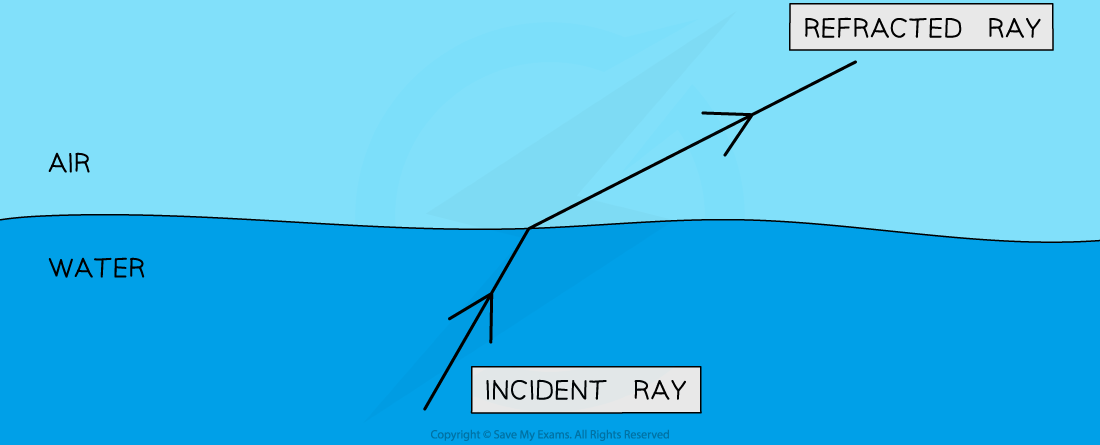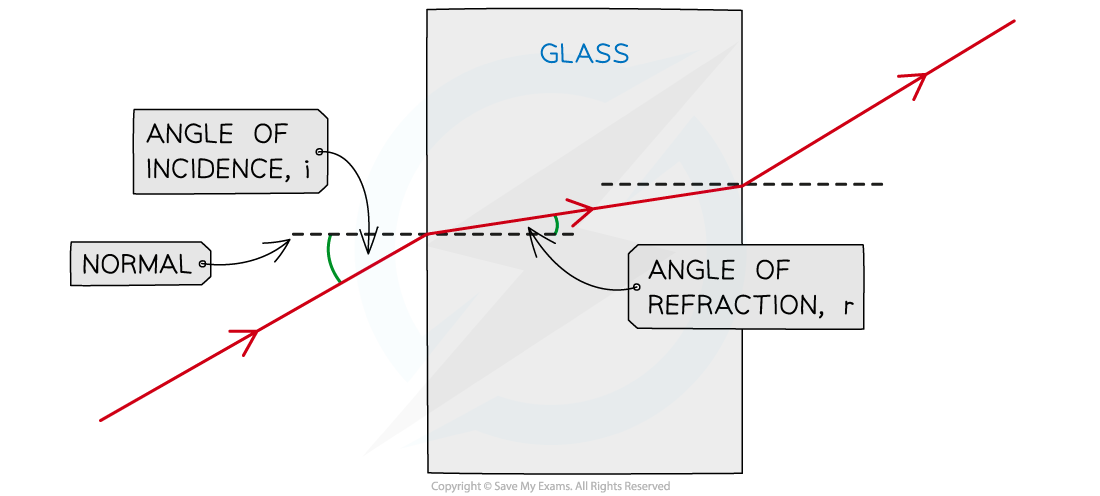Reflection & Refraction (Edexcel IGCSE Physics): Revision Note
Exam code: 4PH1
Did this video help you?
Reflection & refraction
All waves, whether transverse or longitudinal, can be reflected and refracted
Reflection occurs when:
A wave hits a boundary between two media and does not pass through, but instead stays in the original medium
In optics the word medium is used to describe a material that transmits light
Media means more than one medium
An example of reflection

An identical image of the tree is seen in the water due to reflection
Refraction occurs when:
A wave passes a boundary between two different transparent media and undergoes a change in direction
An example of refraction

Waves can change direction when moving between materials with different densities
The law of reflection
The law of reflection states that:
Angle of incidence (i) = Angle of reflection (r)
Angles are measured between the wave direction (ray) and a line at 90 degrees to the boundary called the normal
The angle of the wave approaching the boundary is called the angle of incidence (i)
The angle of the wave leaving the boundary is called the angle of reflection (r)
An example of reflection in a plane mirror

Ray diagram of the reflection of a wave in a mirror
Ray diagrams
Reflection ray diagrams
When drawing a ray diagram an arrow is used to show the direction the wave is travelling
An incident ray has an arrow pointing towards the boundary
A reflected ray has an arrow pointing away from the boundary
A diagram showing the law of reflection

The angle of incidence and angle of reflection are equal in the law of reflection
Refraction ray diagrams
The direction of the incident and refracted rays are also taken from the normal line
The change in direction of the refracted ray depends on the difference in density between the two media:
From less dense to more dense (e.g air to glass), light bends towards the normal
From more dense to less dense (e.g. glass to air), light bends away from the normal
When passing along the normal (perpendicular) the light does not bend at all
A diagram of a ray refracted into and out of a glass block

How to construct a ray diagram showing the refraction of light as it passes through a rectangular block
The change in direction occurs due to the change in speed when travelling in different substances
When light passes into a denser substance the rays will slow down, hence they bend towards the normal
The only properties that change during refraction are speed and wavelength – the frequency of waves does not change
Different frequencies account for different colours of light (red has a low frequency, whilst blue has a high frequency)
When light refracts, it does not change colour (think of a pencil in a glass of water), therefore, the frequency does not change
Examiner Tips and Tricks
When drawing ray diagrams for reflection:
A simple straight line with an arrow is enough to represent the wave
You do not need to draw the wavefronts unless asked to do so!
Take care to draw the angle correctly
If it is slightly out it won’t be a problem, but if there is an obvious difference between the angle of incidence and the angle of reflection then you will probably lose a mark!
Practice drawing refraction diagrams as much as you can! It's very important to remember which way the light bends when it crosses a boundary:
As the light enters the block it bends towards the normal line
Remember: Enters Towards
When it leaves the block it bends away from the normal line
Remember: Leaves Away
Don't forget to draw the arrows for the direction of the light rays and make sure they are drawn with a ruler and a sharp pointed pencil

Unlock more, it's free!
Did this page help you?